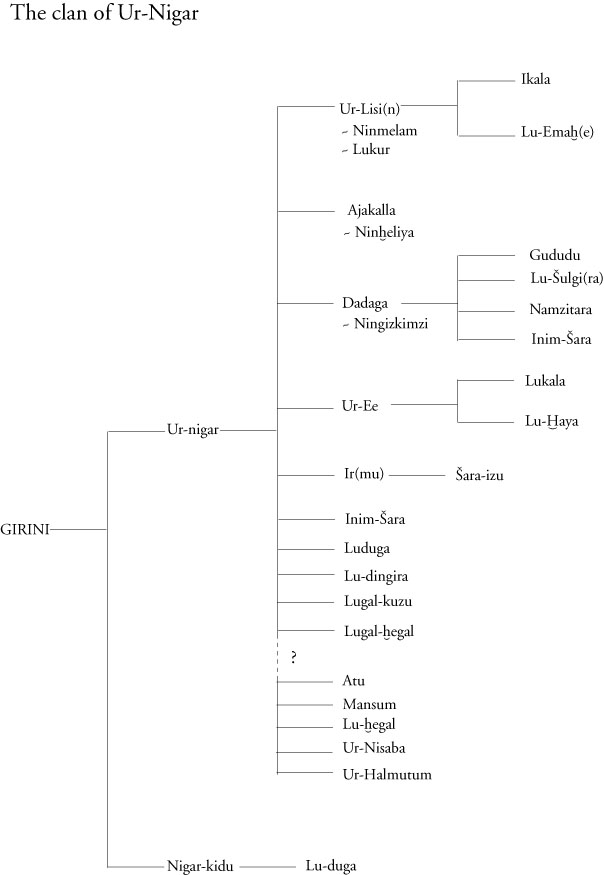The Province of Umma
During the Ur III period the city of Umma (modern Tell Djokha) was the capital of the Umma province. Umma has never been scientifically excavated, but it was extensively plundered during the first quarter of the 20th century. The identification of Tell Djokha with Umma was determined on the basis of a few surface finds made at the same time. During the remaining part of the 20th century Tell Djokha was apparently covered by sand dunes, preventing any excavations. Recently, Umma has again been exposed to looters and extensive damage has been reported. Umma is clearly visible in Google Earth (31°40'2.75"N 45°53'15.63"E). Architectural structures presumably exposed during the recent excavations are also visible. Approximately 25,000 Ur III tablets from Umma have been published; another 4,000 awaiting publication have been catalogued by the CDLI. The total number of Umma tablets in museums and private collections around the world is unknown. During the Ur III period, the Umma province was governed by the members of one family. In the literature, this family is either referred to as the “ruling family of Ur III Umma,” or the “family of Girizal.” The ancestor of the family, GIRI.NI, is only attested through the seal-inscriptions of his sons, and he remains an almost mythical figure. Due to the scarcity of sources relating to the earliest years of Ur III rule in Umma it is difficult to estimate the role of the ruling family during this formative period. However, it is likely that the members of this family were appointed their offices in Shulgi’s 33rd year. During the remaining, almost 40 years of Ur III rule, the governor’s office, as well as a majority of the remaining important offices in the Umma administration, were in the hands of the same family. The well-known governors of Umma are:
Ur-Lisi (governor from Shulgi 33 to Amar-Suen 8; in total 23 years)
A(a)kala (governor from Amar-Suen 8 to Shu-Suen 7, month 2; in total 9 years)
Dadaga (governor from Shu-Suen 7, month 2, to at least Ibbi-Suen 3; in total 7 years)
All three governors were brothers. Their father, Ur-Nigar, held the title “chief cattle administrator” (šuš3), a title he inherited from his father, and which in turn was passed on from Ur-Nigar to a son by the name of Ur-E'e. Ur-E’e almost never used the title šuš3 himself, but it was included in the seal inscriptions of his sons Lu-kala and Lu-Haya. It is likely that Lu-Ḫaya inherited his father’s office, although he is not attested with the title šuš3.
As is obvious from the preceding paragraph, and the image above, horizontal and vertical succession existed side by side in Ur III Umma. However, no system of succession is strictly patrilineal or strictly fratrilineal; rather, some societies tend to favor one over the other. It seems like the preferred system of succession in Ur III Umma was one of seniority, where senior members of a family all felt they had a place in the line of succession.
Bibliography
'The Ruling family of Ur III Umma'
J. L. Dahl, The Ruling Family of Ur III Umma: A Prosopographical Analysis of an Elite Family in Southern Iraq 4000 Years Ago (Unpublished UCLA Dissertation 2003; to be published in PIHANS 2007).
J. L. Dahl, “The Quest for Eternity. Studies in Neo-Sumerian Systems of Succession,” 117-136, in: J.-G. Dercksen, ed., Assyrian and Beyond, Studies Presented to Mogens Trolle Larsen (Leiden, 2004 []http://www.cdli.ucla.edu/staff/dahl/Dahl2004.pdf|download pdf]]).
T. Maeda, “Father of Akala and Dadaga, governors of Umma,” ASJ 12, 71 - 78 (1990).
T. Maeda, “Ruler’s Family of Umma and Control over the Circulation of Silver,” ASJ 18, 254-260 (1996).
K. Maekawa, “Confiscation of Private Properties in the Ur III period: A study of é-dul-la and níg-GA,” ASJ 18, 102 - 168 (1996).
R. Mayr, The Seal Impressions of Ur III Umma (unpublished dissertation; Leiden 1997).
D. McGuiness, “Ur III Prosopography: Some Methodological Considerations,” Archív Orientální 50, 324 - 342 (1982).
D. McGuiness, "The Family of Giri⁄-Zal," RA 76 (1982) 17-25.
D. McGuiness, Studies in Neo-Sumerian Administrative Machinery (1981, University Microfilms International, Ann Arbor, Michigan, US).
P. A. Parr, “Ninhilia: Wife of Ayakala, Governor of Umma,” JCS 26, 90 – 111 (1974).
F. Pomponio, “Lukalla of Umma,” ZA 82, 169 – 179 (1992).
Wu Yuhong, “High-ranking “Scribes” and Intellectual Governors during the Akkadian and Ur III Periods,” JAC 10, 123 (1995).


